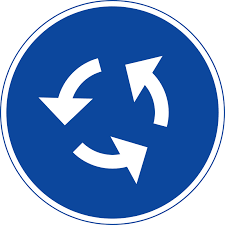Who Has Priority in a Roundabout?
Roundabouts are one of the most common types of intersections in Sweden — and for good reason. They keep traffic moving smoothly, reduce the risk of serious collisions, and are generally more efficient than traditional four-way stops or traffic lights. But one question that often confuses new drivers (and even some experienced ones) is: Who has priority in a roundabout?
The Basic Rule: Give Way to the Left

In Sweden, the rule is simple: Traffic inside the roundabout has priority. That means when you approach a roundabout, you must yield to vehicles already circulating in it. This is clearly indicated by a roundabout sign (D3) and a yield sign (B1).
Once You're In, You Have Priority

Once inside the roundabout, the roles reverse. You now have right of way, but you must still drive responsibly. That means no sudden moves or late exits.
Use Turn Signals Correctly
- Turning right (1st exit): signal right before entering
- Going straight (2nd exit): no signal when entering, signal right before exiting
- Turning left (3rd exit or more): signal left before entering, then right before exiting
Watch for Pedestrians and Cyclists
At many roundabout exits, there are marked crossings or bike lanes. Pedestrians and cyclists may have the right of way depending on signage and markings. Slow down and check both sides before exiting.
Summary
- Yield to vehicles in the roundabout
- Use your indicators properly
- Be cautious of pedestrians and cyclists
- Drive smoothly and predictably
Ready to practice roundabout rules?
Test your knowledge with our interactive quizzes: